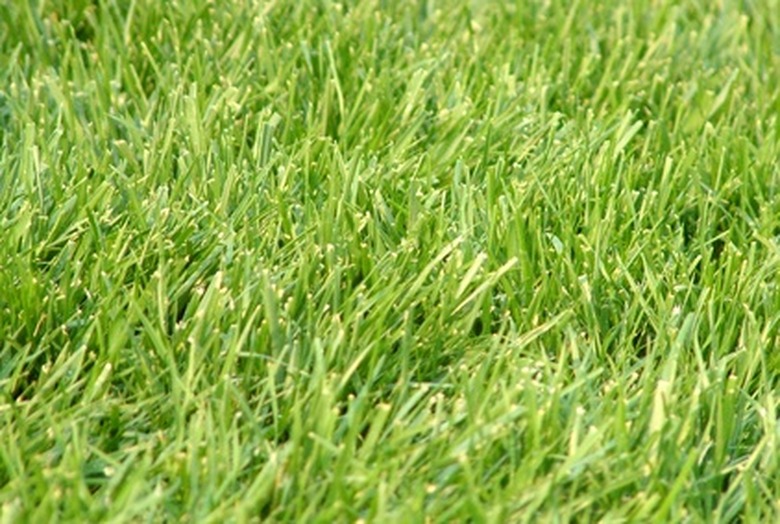Different Kinds Of Grass In South Carolina
The relatively mild winters and hot summers in South Carolina gardens find many different species of turf grasses grown. However, warm-season grasses remain green when warmth remains, becoming dormant and brown from fall to spring. Cool-season grasses look lush and emerald green when temperatures sink below 70 degrees Fahrenheit. Ornamental, unmowed grasses decorate gardens because of their more ornate foliage or flower plumes.
Cool-Season Turfgrasses
Only in the Upper Piedmont region of South Carolina do gardeners successfully grown cool-season turfgrasses year round. This highland region extends northward from Interstate 85 to the North Carolina border. If summers become too warm or dry, cool-season grasses go into dormancy, slowing growth and browning until moisture or cooler temperatures in autumn return. In warmer regions of South Carolina, these lawn grasses are used as cover crops or temporary lawns in autumn, winter and spring. The seeds of Kentucky bluegrass, ryegrass or fescue are scattered across warm-season lawns to germinate and remain green from November to April.
- The relatively mild winters and hot summers in South Carolina gardens find many different species of turf grasses grown.
- However, warm-season grasses remain green when warmth remains, becoming dormant and brown from fall to spring.
Warm-Season Turfgrasses
South of Interstate 85, South Carolinian's yards tend to be carpeted with more warm-season turfgrasses, those that go dormant in winter's chill, but grow lush and vigorously in the heat of summer. Centipedegrass, zoysia, Bermudagrass, bahia and St. Augustine grass, known as Charleston grass in the Palmetto State, comprise the plant species grown. Charleston grass does well only in the mildest winter regions in the lowland coastal counties of southeastern South Carolina. During winter and early spring, all but Charleston grass tends to turn beige and dormant in its roots until consistent warmth and long days return by April. Sometimes cool-season grass seed is scattered throughout the warm-season turfgrass lawn in autumn to provide seasonal deep green color until late spring.
Ornamental Grasses
In meadows, roadside verges or in mixed perennial borders, many species of ornamental grasses grow without being mown during the the summer and fall. With tremendous variety, these clumping grasses bring various leaf textures and colors, and ornamental plumes of flowers and seed heads to landscapes. They dry after frosts and remain decorative throughout winter even though their foliage is dead and shades of brown, tan or gold.
- South of Interstate 85, South Carolinian's yards tend to be carpeted with more warm-season turfgrasses, those that go dormant in winter's chill, but grow lush and vigorously in the heat of summer.
References
- Clemson Cooperative Extension: Selecting a Lawn Grass
- "Gardening in the Carolinas"; Bob Polomski; 2000
